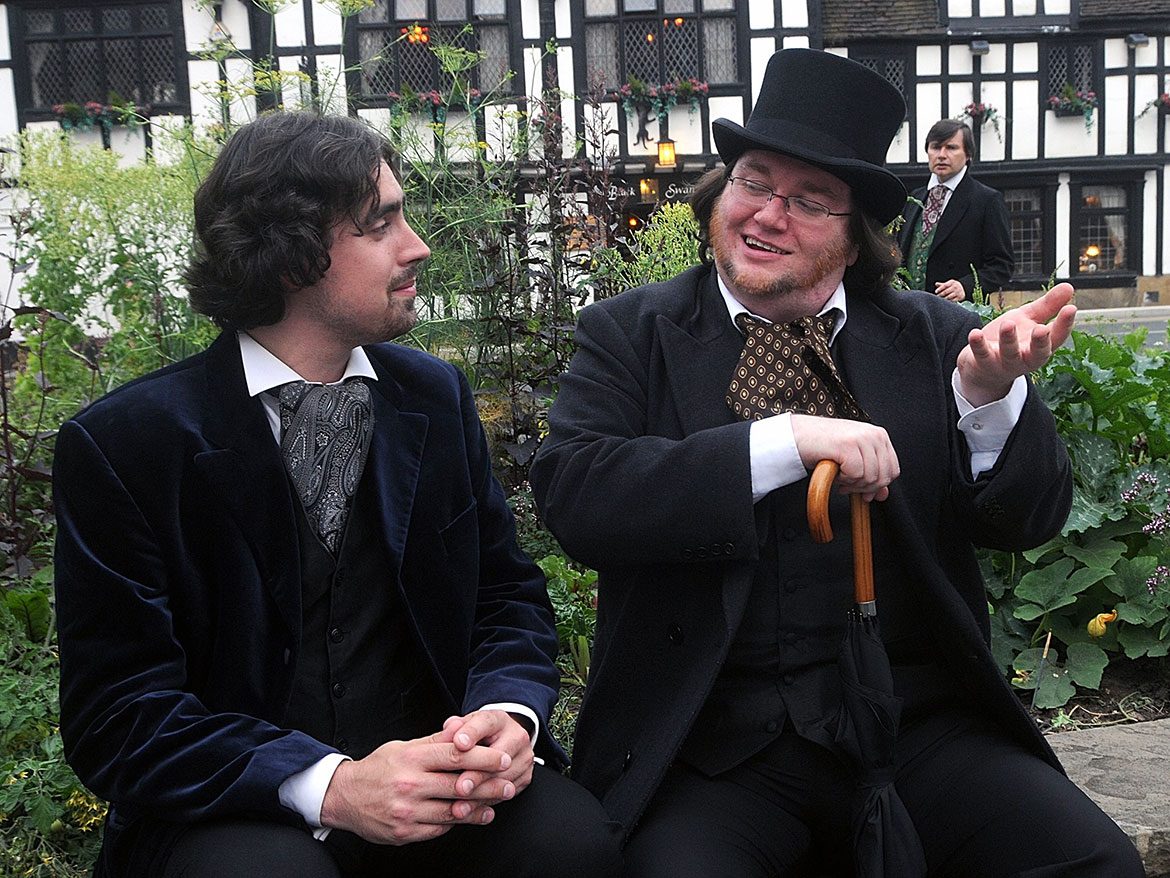“Every portrait painted with feeling is a portrait of the artist not of the sitter.”
Upstage Centre Youth Theatre, Monkgate
Till Sept 17 @ 7.30pm
£8-£10
As Alison Morgan says in her programme notes: “Dorian Gray is a reflection of all of us,” and 126 years after its publication, The Picture of Dorian Gray is as pertinent, modern, fresh and terrifying as when it first appeared.
How to do justice the perfect man? (Well, a perfect-looking man at least)? It is impossible, but I will do my best.
The first thing that struck me about this production was how sparse it is: a table, a chaise longue, a few salon chairs and a picture frame are almost all the props used. A piece of netting at chest height conveys a badminton court, a mattress on the floor and we are in an opium den.
Any other scenery is described by the ever-present narrator, more of whom later. The famously luscious gardens, the opera, the tragedy of Sibyl Vane’s death all are given to us in words, allowing the audience’s imagination to take control of the action.
A chamber piece
Dorian Gray is at heart a chamber piece, in which sparkling conversation between men takes central place. This concentrates and intensifies our experience; we can look nowhere but at the actors who cannot escape their fates.
This was a first night performance, and as such there were a few fluffed lines, but everyone gave their maximum. Daniel Wilmot as Dorian expanded into his role, being lovelorn, ruthless, petulant, mad and desperate with greater speed as the evening progressed.
David Harrison’s decision to use contemporary as well as classical music was clever; Dorian’s time is our time, the cult of the individual and the obsession with youth is as strong now as it was then.
I also realised how much this is Basil Hallward’s play as much as Dorian’s. Basil is the expert, the innocent, the conscience, as much as Lord Henry is the antagonist. When Basil tells Lord Henry, “I trust you,” one can hear the clang of a death-knell.

Basil never appears twee or saintly however, being played with great subtlety by Paul Toy. Hallward is a humane human being, who also, fatally, needs his muse. As the friendship between Basil and Dorian breaks down, Basil ceases to paint.
Lord Henry is a gift for any actor, played here by Lee Giemmel. Perhaps he was played here as slightly ‘larger’ than I would have liked, without the nuance and inexorableness I have seen in other productions, but maybe this will develop in later performances.
Lord Henry’s ageing in the final scenes is an excellent shock: no longer ‘Old Harry’ able to manipulate his favourite protégé, he is just an old man, all power gone, facing a terrifyingly young one.
Like a shadow
Another interesting idea was to have the ageing portrait (played by Samuel Valentine) follow Dorian like a shadow as he continues his increasingly reckless life.
I wondered if this took away from the surprise of the portrait’s altered state in the final scene, but I liked the way it acted as Dorian’s silent conscience, instigating his vows for better behaviour (“I’ll marry Sibyl and try to love her,”) and his going to the opium den to rescue Basil.
The narrator, played by Lisa Valentine, lent an element of Greek tragedy to the action. Although she was there to add detail to the scene descriptions, both narrator and portrait act as Dorian’s judges – the only figures who know the extent of his depravity, they are the only ones who can truly strike his conscience.

Special mention must be made of the work of scriptwriter Heather Wilmot, and Alison Morgan, who also edited the script. I had nothing but admiration for their skill in adapting the Oscar Wilde story: the pace of the action and the way in which each scene led into the next without lingering, which with such a dense literate script, could have happened.
They brought out the humour and fatal charm of Lord Henry’s first scenes, and showed Sibyl Vane to be far more than the innocent ingénue; her pleas to her callous lover were heart-rending.
I am aware that I am only able to scratch the surface of the paint of this production. So much more could be said, but that is what makes this work fascinating and timeless.
Everyone who looks at Dorian Gray’s portrait will notice something different, and something of themselves. Come and see yourself, while you can.
